On Saturday 30 March 2013 four teams ran a relay race around the island of Pohnpei. This is a log of the events of the day as related by a runner in the relay. There is no intent to criticize those who worked long and hard to make this event happen. My log is intended as a reference to any future such endeavors. This was the first time anyone has attempted a relay race around Pohnpei’s circumferential road with four teams each with up to 25 runners. Being a first effort, there was no history to draw on for experience.
The 1999 round Pohnpei Culture Quest walked around the island in five days, four nights.
Two female runners ran around Pohnpei in a two day effort on September 11 and 12, 2011. The runners spent the night in Wone before continuing the next day. They were accompanied at times by Pohnpei track team runners. In that effort, runners running through Sokehs and Kitti reached the Welcome to Madolehnihmw sign in four hours and nine minutes. Somewhere out between the sign and Wapar is exactly half-way around the island, thus the runners were on an eight hour circumnavigation pace.
In 2012 the White Ribbon walk sent two teams from Wapar to Kolonia, one team on each side of the island. Teams covered sparsely populated areas in a vehicle, less sparsely populated areas on foot. An 11:52 start in Wapar put the teams in Kolonia at 17:45, some six hours later.
My own estimates ran from a fastest possible time of 5 hours 10 minutes up to 9 hours and 42 minutes as a worst case scenario. My estimates and the differential that different average speeds created led me to believe that teams would finish with large time differences between the runners. I would be proven thoroughly wrong.
0700 First runners arrive Spanish wall
0735 Directions were given to the runners
0750 A decision was made to launch on time whether or not Election district two, Kitti and Madolehnihmw, was present. Discussion at the start line was that teams should be completely present with all 25 members at the start line. Moments after starting an ED2 runner showed up. I was told he then ran the first six miles. For reasons of transport and logistics, ED2 had chosen to preposition runners along the round at the marked ribbon exchange locations. Although the runners had long waits, the team appeared to use Kitti runners in Kitti and Madolehnihmw runners in Madolehnihmw, so the runners were not waiting on unfamiliar terrain.
0757 Runners on the bus
0800 Race launched.
The bus drove to the Mormon church, as per the change over sheet. My own GPS calculations suggested that the change over was closer to John Sohl’s house. At this point no one had seen what the pavement markings being used looked like. The bus crew may have been confused by road work markings. All drivers should probably be made aware of what the markings look like by using a picture of an actual marking shown prior to the start.
Although the bus dropped runners, the bus then encountered the change over mark just before the hill prior to John Sohl’s house. The next change over was marked as being on the Mount Dolon pass, but the change over was at the foot of the pass. This was probably a wise decision as it put a runner with fresh legs onto the uphill.
By 0831 the bus had arrived at the College of Micronesia-FSM for the third change over.
The police sirens were easily heard well in advance of the arrival of the lead runner. We could often see the police car.
0839 3 x 6 Lead runner ribbon exchange occurs behind LRC at COM-FSM.
The bus that dropped the runners left behind the lead runner and the motorcade accompanying the lead. As the day developed, the lead car would usually be the Kolonia town police car and a municipal police car. The trailing car was for much of the run a small gray station wagon. At various times the lead entourage included flat bed trucks and a small dump truck.
The bus would then have to pass all of these vehicles. Although the bus driver was superbly skilled at this maneuver, a more optimal solution is for the bus to pull out when the sirens for the police car can be heard.
One might think the bus should run ahead dropping runners without pause, but given that the race will exceed six hours, this could put runners who are unfamiliar with a location on the road for many hours.
So the lead bus rightly remains at a change over place until the sirens can be heard and then pulls out and drives to the next location. We could always hear the sirens, we could usually see the lead police car in advance of arrival.
In a couple instances the bus had to stop and wait for runners to get back on board. The runners wanted to wait for the ribbon runner to come in to cheer on the next ribbon runner. This does not work. Runners who have yet to run must be instructed prior to the race that they cannot do this, they must be on the bus. At the sound of the siren, they reboard the bus. The driver will have to know to pull out to remain ahead of the motorcade, even if a straggling runner fails to reboard that lead bus.
Ideally every team would have their own multi-passenger vehicle. Then the vehicle could leap frog the runner. Only the lead team would have the motorcade issue to deal with in this case. In the Saturday event, multiple teams were on the lead bus.
0854 4 x 8 runner exchange Dien, Kitti. I was not fond of this particular location at Churchill Edward’s driveway halfway up between Elwel Samuel’s place and the Nankap at the top of the hill. The road is narrow and straight, cars tend to move fast downhill coming out of Pehleng. I thought this one should have been shifted either to Elwel’s place, Soumas en kousapw Dien, or up at the top of the hill where the road widens a little.
I had noted that exchange points should be shifted slightly to optimize runner safety. The goal of having each runner run two miles should be balanced by having ribbon exchange points that are manageable from a traffic standpoint. Pohnpei has no shoulders, no sidewalks, nothing other than trees, bush, and tall grass alongside the road.
Although I had expected Easter-related church festivals to be a factor for the “Black Saturday” run, this did not prove to be the case. Traffic was not as heavy as I expected, in part because no running group was on the road in the late afternoon. Traffic tends to pick up in the late afternoon on Black Saturday.
0915 5 x 10 ribbon exchange point in Pwudoi near the fresh water source. The hour fifteen minute run to the ten mile point suggested a six hour fifteen minute circumnavigation for the lead team.
0933 6 x 12 Ricky Jano store near municipal office in Kitti.
0950 7 x 14 Lehn Mesi. Temperatures on the road were climbing on a sunny day.
1004 8 x 16 Jeds. At Jeds the Kitti sports coordinator purchased cases of water from Kitti Mountain Spring water at Jeds. The teams had not stocked enough water into the vehicles given the hot sunny conditions. I appeared to be the only runner who brought their own hydration supply, and I was the only runner with an electrolyte replacement drink.
At the other end of hydration input was the matter of needing to eliminate fluids. The men simply used the bush. I remain unclear how the women handled their personal needs.
If this activity were to be extended to an international field, then some more formal provision for restrooms would need to be made. Whether using porta-potties or prevailing on local businesses and/or families would work better is unclear to me.
Hot road running in Pwok.
1024 9 x 18 Enipeine Powe bridge
In each municipality we were met by and escorted by the local police along with the Kolonia town police car that led the runners all the way around the island. For a runner, the lead car must be a “clean running” car with low emissions, and the Kolonia Town police car was just such a car.
1034+ 10 x 20. Wone/Rohi bridge. The bus correctly left the twenty mile mark ahead of the ribbon exchange, sometime after 10:24 in the morning. The run was two hours and 24 minutes underway at this point.
~1055 11 x 22. End of Kitti. This was my starting mark. I wanted to run the hills between Rohi and Wapar, so I had asked for this leg. Running them under the eleven o’clock sun was simply a plus. I ran about a hundred meters in Kitti, the rest in Madolehnihmw. I opted to carry a Gatorade with me, which proved invaluable.
My warm-up was the run up the hill into Madolehnihmw, the longest and steepest hill of my run. Photographs do not do justice to this first hill, around the corner the hill rises sharply on a long right turning ascent.
I was sucking blast furnace dry air by the top at 11:02. Ahead were two more hills and then a final climb into Wapar.
Although that first hill was a doozy, I never dropped back to a walk. Word was that some teams were walking on uphills such as the Wone Luak hill. I knew if I managed my energy and effort, I could trot up the hills and cruise down the backsides. An uphill is just an energy management problem, a constant effort calculation. And a whole lot of fun. Mostly I was overjoyed at getting to run hills that have long called to me. And getting to run them with a police escort was an undreamt of plus.
1121 12 x 24 Hill past Soisi residence, near Wapar. Count me slow. With runners turning in 14 to 17 minute two mile legs, I came in at over 20 minutes for my two miles. Fast I am not, but uphill and down I held a steady effort. I could only hope that the other teams would find those hills challenging.
~1134 13 x 26 Parau church. Seems like a long two miles into Parau, but the runner carried the distance quickly.
~1147 14 x 28 Lester Ezekias residence Madolehnihmw. Lead runner in just after 11:47 in the morning.
1208 15 x 30 Borbert Albert’s house. At the end/beginning of the “Japanese” paving project in Madolehnihmw near the Japan/FSM friendship road project marker.
1226 16 x 32 Top of the hill to Mesisou. My photos show a “17 x 32” mark on the road as the next mark. The next mark would be 17 x 34. So this was a road typo, so to speak.
~1243 17 x 34 Wesner Johnny laundromat. The bus did not see this mark due in part to lighting conditions, bad road (potholes), gravel, and dust. The bus actually passed the runner in the shade at this location, went up over the hill, finally turning around at ESDM school and racing back to the exchange point.
1258 18 x 36 By ahlo kapw. This was the hottest part of the run. Pavement temperatures were insane. One could not hold one hand on the hot asphalt. Shade was non-existent. And there was no breeze. Temperatures above the asphalt had to be near 38 Celsius, humidity over 80%. Any visiting teams ought to be prepared for these conditions.
Although the pavement was burning hot, even the little shade that the bus provided seemed to be enough for the above runner. The bus was also hot – runners were dehydrating just sitting on the bus. Their only advantage was that some had grown up riding these buses packed full of school children in equally hot weather. This was not unusual conditions for the heat tempered runners who ran the relay. Visiting teams should be ready for seriously hot and humid conditions, possibly intense sun, possibly heavy rain.
Two runners from Paies in Palikir along the road in Madolehnihmw.
The exchange to the eighteenth runner at mile 36 occurred at 12:58:05.
1311 19 x 38 Miler Benjamin Residence, U. That exchange occurred around 13:11:43, making for a twelve minute two mile segment from Madolehnihmw into U.
The bus passed the third day of the Nahnmwarki U funeral at 1313 in the afternoon.
1327 20 x 40 Simon Kihleng residence just past Nanmadol drawing.
A sea breeze and some small patches of road-edge shade were available here.
1343 21 x 42 Gilmete resident past Falcam’s is what the formal sheet says. I think of the place as Awak Pah.
The Nett police met the runners at the border.
1400 22 x 44 Adam’s apartments, just shy of Green Bay. Again, a shift down to Green Bay might have been a better exchange point. The ED2 Madohlehnihmw/Kitti runner had just caught and passed the ED3 Nett/U runner. Madolehnihmw had their own support vehicles, thus this place became choked with cars and runners, plus traffic endemic to that area.
There was no guidance on how support vehicle drivers should behave when entering a ribbon exchange point. The ED2 vehicle pushed through the crowded area to remain with their runner. Had there been opposing traffic, the situation would have been problematic. Ideally the exchange points would be at wider locations, not necessarily exactly at the two mile mark. Exchanges should be at a location where vehicles as large as a bus can pull completely off the road. Kusto’s place in Green Bay might have worked well for this particular choke point.
The closing of what had been a big gap caught ED3 off guard. By the end of the race there were allegations that ED2 had swapped runners during two mile segments when one runner began to flag, putting fresh feet on the ground part-way through a two mile leg. I am not certain that the teams were aware that this was considered a rules violation. I saw no written rules that said that a team could not put a substitute runner on the road. And were a runner to become heat exhausted, then a team would have to put a new runner on the road. Was the goal to move the ribbon around the island? Or for each two mile segment to be completed by a single runner and only a single runner?
ED2 had allegedly had one runner run the first three legs, six miles. The rules on how far a runner had to run was unclear. I think the 25 member team limit was been clear, but actual on-the-segment running rules were not necessarily as clear, especially for teams that fielded fewer than 25 runners.
ED3 adhered to the two mile per runner implicit rule. ED3 would pass ED2 between Green Bay and 4TY and did not relinquish the lead. ED2 did not try runner swaps during those last few legs.
All of which come back to having well trained, informed, race officials traveling with each and every runner on the road. That would be a must in an invitational international run around Pohnpei.
Above the ED2 runner heads out of the exchange point, led by the team support vehicle.
1411 23 x 46 4TY. 14:11:42 Makalino Ardos leads out of the exchange point, working on building the small ED3 lead. Over the two miles since Green Bay, ED3 had passed ED2 to retake the lead.
Based on my photos, I think 4TY was also mismarked as “23 x 44”. A really rough place to exchange, just past 4TY. A traffic nightmare. Again, a small shift, back to the movie parking lot, would have decongested the road. With massive thanks to the police, they were on every intersection in town and helped protect the runners from traffic to the extent that they could. Still, congesting Kolonia on Black Saturday, pidek Saturday, was probably suboptimal. Suboptimal and yet exciting.
Above ED2 is in second place as the bus heads to the final exchange point on the causeway. I know the organizers wanted a 50 mile relay, and the causeway segments were nice for spectators, but I think a straight in from 4TY to Spanish Wall would make more sense to the runners. The point in the runner’s minds is to circumnavigate Pohnpei, and the final out-and-back to the airport did not necessarily make sense to all the runners. The result of a straight shot into Spanish Wall would be a 48.2 mile relay requiring, I suppose, only 24 runners.
~1422+ 24 x 48 Ferny Perman’s hut on the causeway. Runners ran from 4TY to the airport and then doubled back to the Lidakihda junction on the causeway. ED2 passed outbound to airport at 1422. Third place passed outbound at 1424.
Madolehnihmw passes Lidakihda junction outbound at 14:22.
1438 25 x 50. ED3 finishes at Spanish wall. The route in was back down to 4ty, right turn up to AMCRES, and then a right down main street straight into the finish line. Six hours thirty-eight minutes for the lead team. ED2 came in just behind ED3 at about 14:40. The actual separation was probably just under two minutes, my times are approximate.
ED3 ran an average two mile segment in 15:55, or a 7:58 per mile pace. In light of this, my own segment was certainly the slowest. Swapping in a trained hill runner ought to shave a good five minutes off that hilly segment.
My pre-race guess was wholly wrong. I had thought that the teams would be well separated by the end of the run. I thought no team would be anywhere near another team and that separations could be at the hour scale. The final legs, however, were a thrilling and grueling speed battle. Third place, the soccer team, would finish at 14:26. The basketball team would come in at 14:48. All four teams finished within ten minutes of each other after 50 miles. That is completely insane.
Again, these notes are not meant as a criticism of anyone. No one has attempted a round Pohnpei relay, not as far as I am aware. This was a first, and a real learning experience. All suggestions are mine and mine alone, not the considered opinion of an expert. I apologize for any bruised feelings.
My thanks to all those who made the relay possible. Running with the ED3 runners was a privilege and an honor. A special thanks is owed to the coordinators. My own personal thanks go to Rendy Geminaro for asking me to join and to the ED3 coach and runners for allowing me on their team. I have long dreamt of running those hills between Rohi and Wapar under the midday sun, and that dream came true for me.
An analysis of the photographs coupled with some interpolations suggests the following table of times in minutes for the runners to run their two mile segments.
| Starting location | Runner | Time |
| Spanish wall | Maclino Ardos | 13 |
| Beyond Panasang | Magdano Marquez | 13 |
| Base Mount Dolon | Jasper Ponapart | 13 |
| Daniel store COMFSM | Xavier Edwin | 15 |
| Dien Churchill driveway | Jason Ernest | 21 |
| Pwudoi | Marlon Etnold | 18 |
| Ricky Jano Store | Dionisio Augustine | 17 |
| Lehn Mesi | Floriano Ponapart | 14 |
| Pwok/Jeds gas | Relo-liza Saimon | 20 |
| Enipein power bridge | X-Ler Rodriguez | 15 |
| Wone/Rohi bridge | RC Lopez | 16 |
| Madolehnihmw border | Dana Lee Ling | 26 |
| Hill past Soisi residence | Hendy Ardos | 13 |
| Parau church | McWelton Gomez | 13 |
| Lester Ezekias residence | Justin Rodriguez | 21 |
| Borbert Albert residence | Adson Dadius | 18 |
| Top of hill to Mesihsou | McCaffrey Gilmete | 17 |
| Wensner John Laundry | Diony Setik | 15 |
| Ahlo kapw | Mars Gilmete | 13 |
| Miler Benjamin residence | Eugene Amor | 16 |
| Simon Kihleng residence | Oneil Cantero | 16 |
| Gilmete residence | Vicky Nick | 17 |
| Adams apartments | Marino Ardos | 12 |
| 4TY | Mike Laurdine | 13 |
| Perman hut Lidakihda | Robert Nakasone | 13 |
Note that State Senator Robert Nakasone was slated to run anchor and did so, although the sash was passed on to a faster substitute in light of how tight the race had become. Robert, along with other members of the ED3 team, ran behind the sash runner. The 13 minute time in the table above is the time for the sash runner.

A box plot of the times indicates clearly my being an outlier. While the hills I ran between Rohi and Madolehnihmw constitute the greatest vertical changes for any of the two mile segments, clearly a trained hill runner could run a much better time. I did manage to run my two mile segment, I was later informed that some of the trailing teams had runners who were reduced to walking up the hills. Quite frankly, my trot up the first hill into Madolehnihmw was undoubtedly no faster than a walker could walk up the hill.
Looking towards running this event again with an international field, the coach will have to train some hill runners. Many of the best runners on the island are track trained and are not doing regular hill training. Being able to attack the uphills will be a critical offensive capability for any future run.

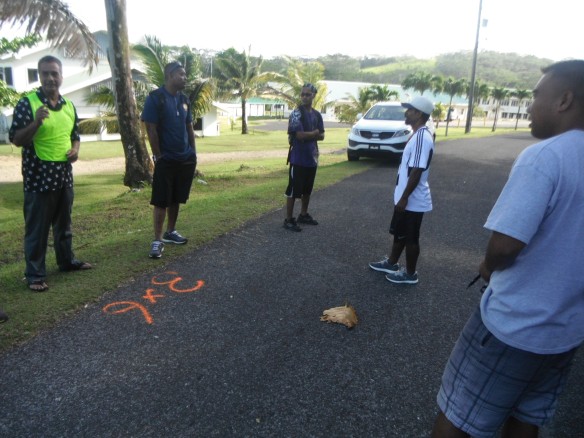
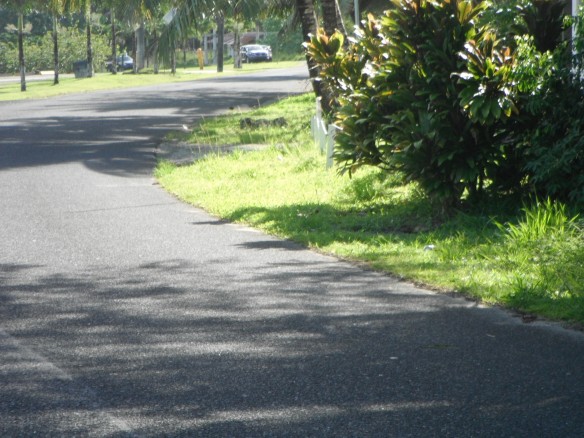
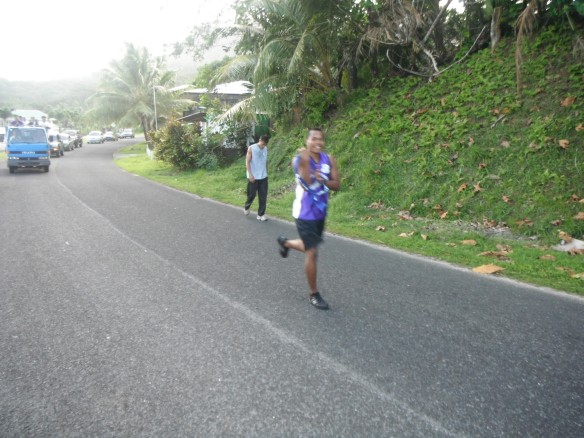


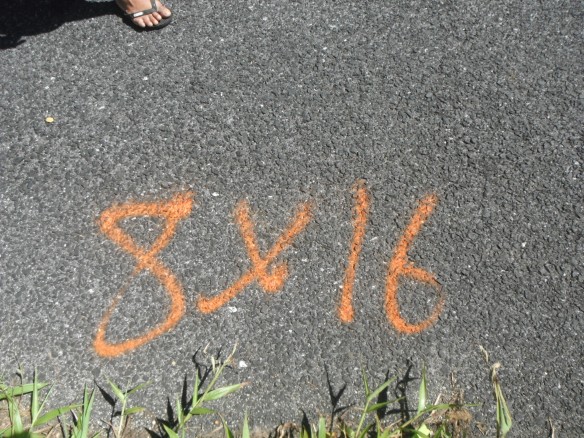



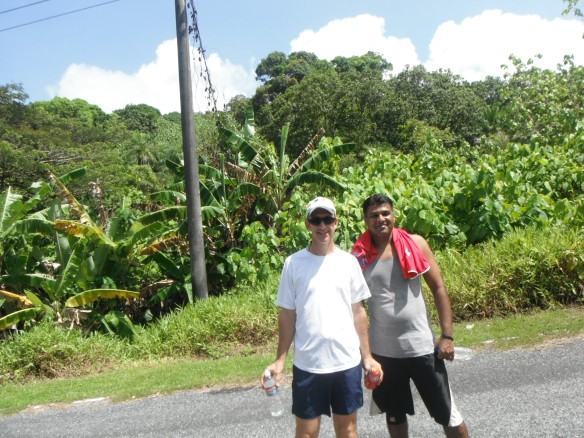

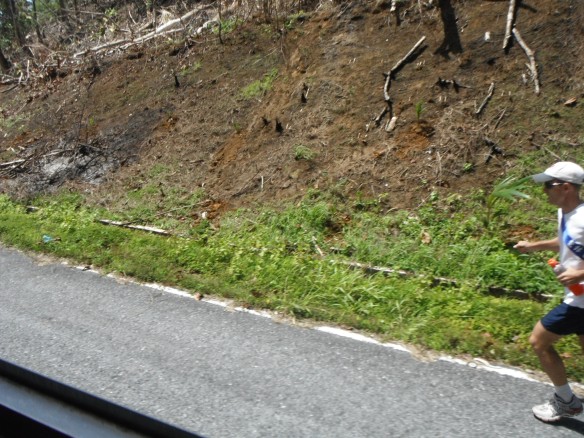
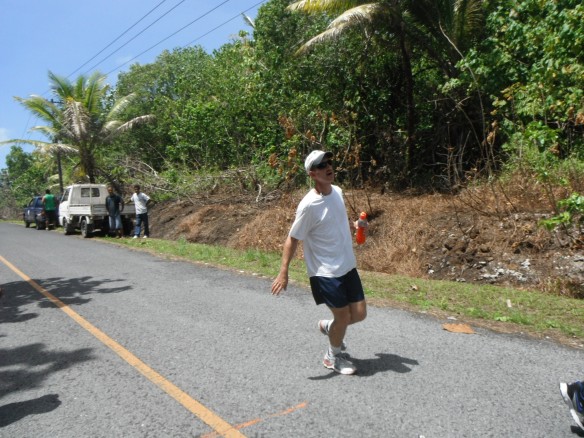
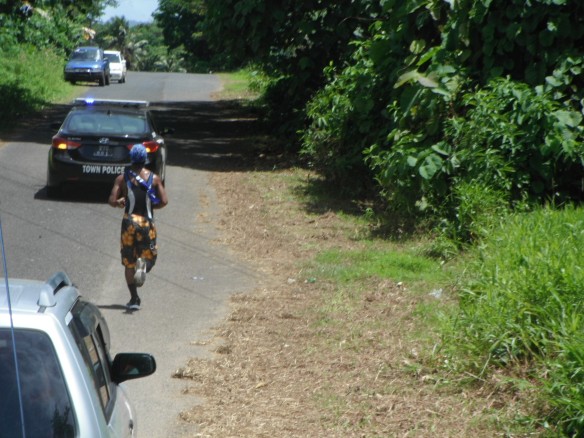
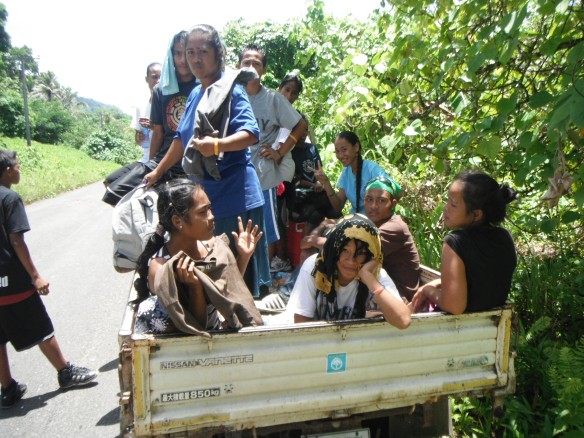
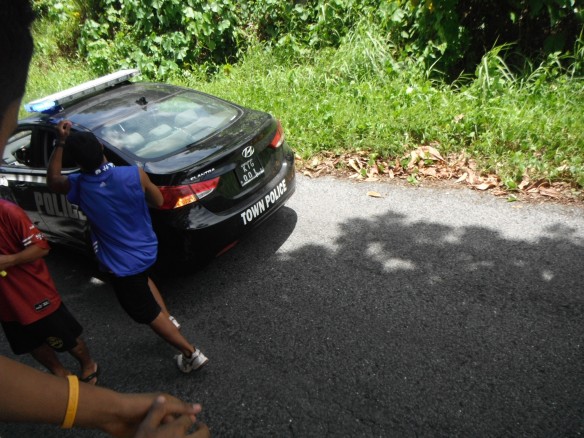
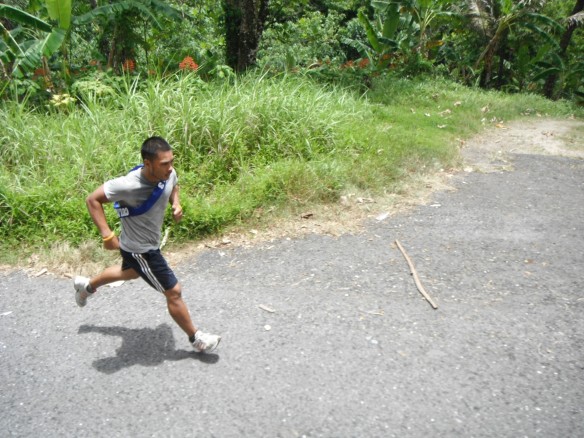

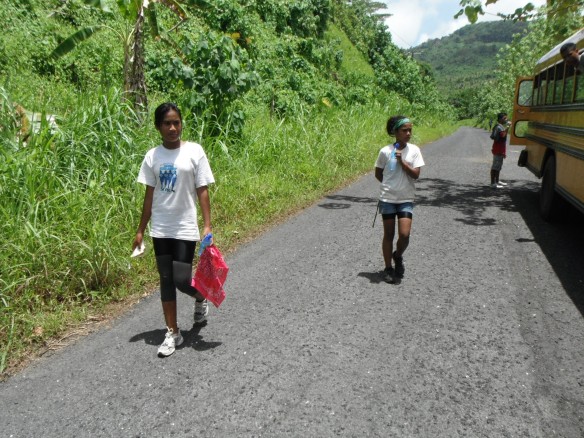
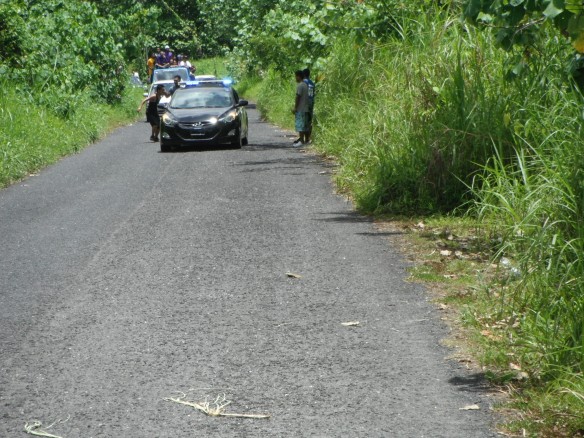

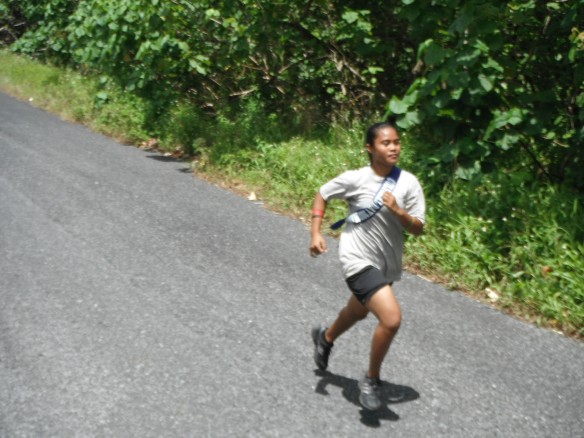

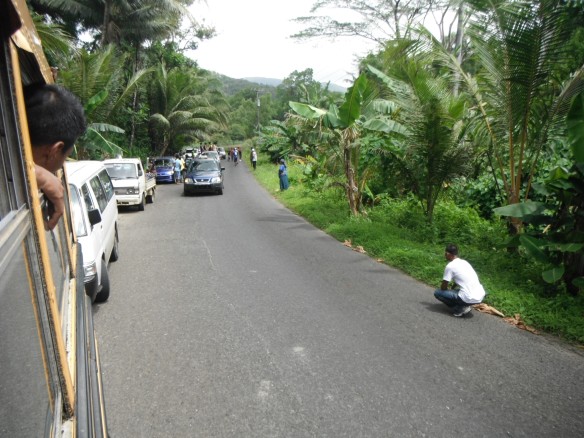
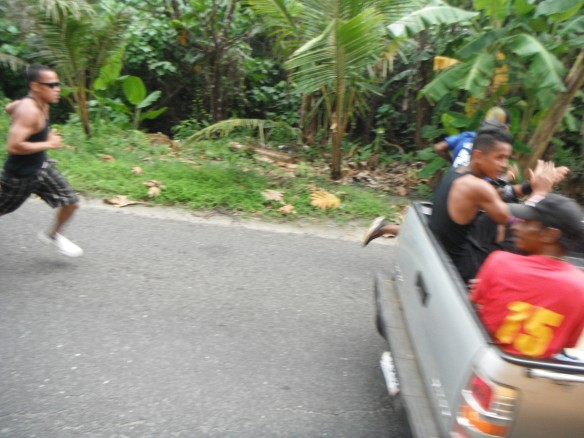
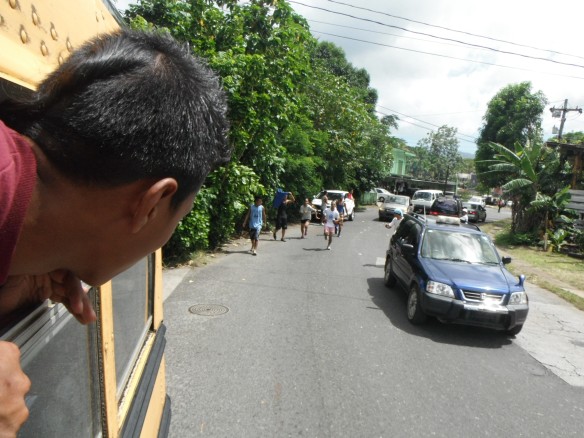
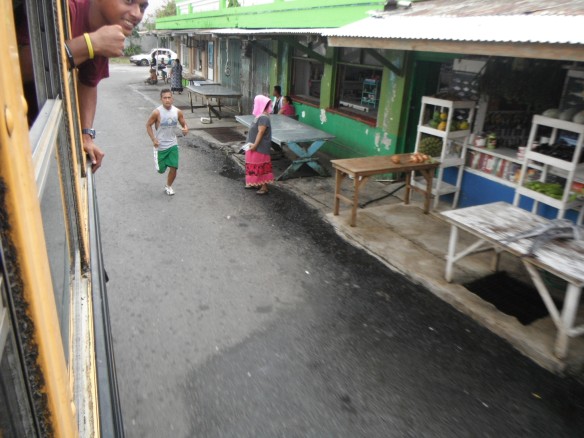
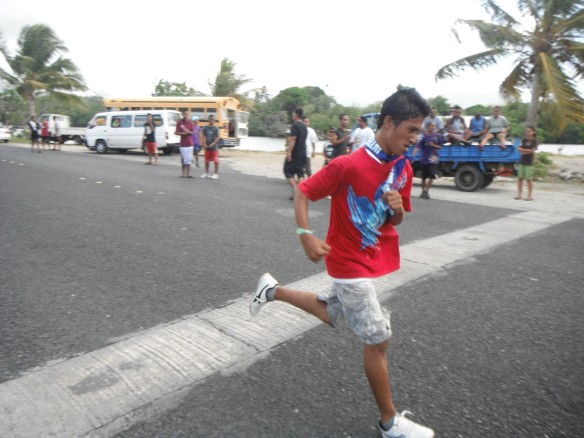

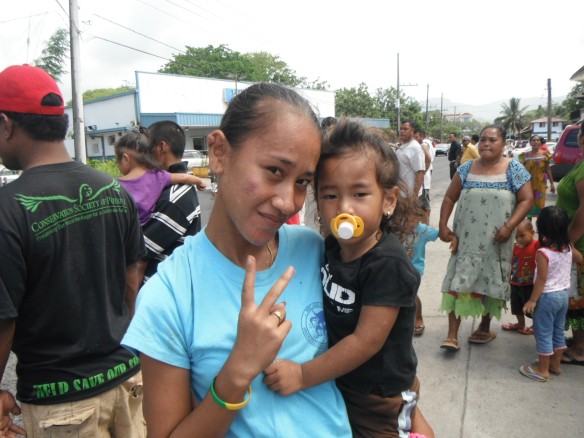
Kudos to all of you. You all did GREAT! I am only sorry I missed it all staying in town to do some other work. But I am happy that it was a success. It’s getting better. Next time, it will be more fun. I am glad you were a part of yesterday Dana.